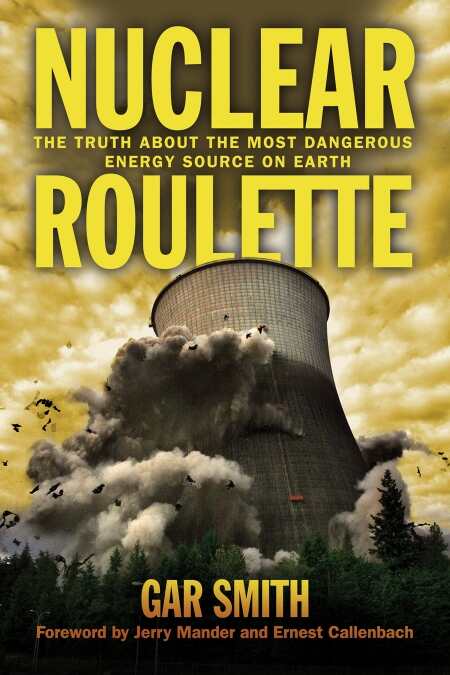Nuclear Roulette
The Truth about the Most Dangerous Energy Source on Earth Earth
- 2012 INDIES Finalist
- Finalist, Ecology & Environment (Adult Nonfiction)
German Chancellor Angela Merkel, once a quantum chemist studying subatomic reactions, was, according to author Gar Smith, “an outspoken advocate for a nuclear renaissance.” But, on March 11, 2011, Merkel, like most of the world, watched the terrifying videos coming out of Japan. Her words to an aide as a hydrogen explosion ripped apart the containment building surrounding the Fukushima-Daiichi Unit 1 nuclear reactor were: “It’s over.” Within weeks, Merkel had unveiled a plan to speed up the decommissioning process of all seventeen German reactors.
Her vision for a “green Germany” is leading the nation to invest in local green-tech energy. Corporate control of power is being replaced by citizen ownership, and Germany’s stand for clean, safe, renewable energy solutions is attracting worldwide attention.
Smith, an award-winning investigative journalist, former editor of Earth Island Journal, and cofounder of Environmentalists Against War, reveals why the United States insists on energy policies that put human life, and the very habitability of the planet, in peril even though it has been undeniably proven that nuclear energy is costly, cumbersome, and dangerous. In writing that is pointed, passionate, and backed by thorough research, Smith unveils the nuclear industry’s “business before safety” attitude and its appalling record of potentially catastrophic accidents and “near-misses,” as well as the cover-ups, intimidations, and threats that have been used to keep the public in the dark about the real risks involved in what is being marketed as a “nuclear renaissance” in this country. Taking on industry assertions that nuclear energy makes the nation stronger, Smith points out that, rather than serving as a deterrent, the presence of nuclear reactors actually makes nations that depend on the technology extremely vulnerable to devastating terrorist attacks and to the massive destruction that nature (hurricanes, tornadoes, earthquakes, tsunamis, and wildfires, to name a few) and human error can unleash.
Taking the nuclear industry to task for declaring that its aging and deteriorating reactors (some built with the same design as those of Fukushima) are safe, Smith provides ample evidence that they are not: They have been shown to leak and discharge radioactive and otherwise toxic materials into the air and water; cancer rates in the populations living in proximity to nuclear plants are skyrocketing (the nuclear industry, Smith says, is aware that there is no safe level of exposure to ionizing radiation); inspections are lax or omitted; and America’s nuclear reactors are built on known geological fault lines and in highly populated areas that are prone to severe weather events and flooding. In spite of all this, the Nuclear Regulating Commission makes sure that operating extensions are granted to nuclear plants with poor safety records and histories of accidents.
Smith makes it obvious that nuclear energy is a “doomed technology,” and advocates for an immediate turn to safe, renewable energy; he also offers some hope that such a redirection is possible, including this: “On June 28, 2011,” he wrote, “the US Energy Information Administration announced that—for the first time—renewable energy had trumped nuclear as a major source of power.” Smith’s book, with its chilling inventory of nuclear reactor accidents and its thirty-five pages of references, is essential reading for legislators, voters, students, environmentalists—in fact, anyone concerned for the future of life on this planet.
Reviewed by
Kristine Morris
Disclosure: This article is not an endorsement, but a review. The publisher of this book provided free copies of the book to have their book reviewed by a professional reviewer. No fee was paid by the publisher for this review. Foreword Reviews only recommends books that we love. Foreword Magazine, Inc. is disclosing this in accordance with the Federal Trade Commission’s 16 CFR, Part 255.

